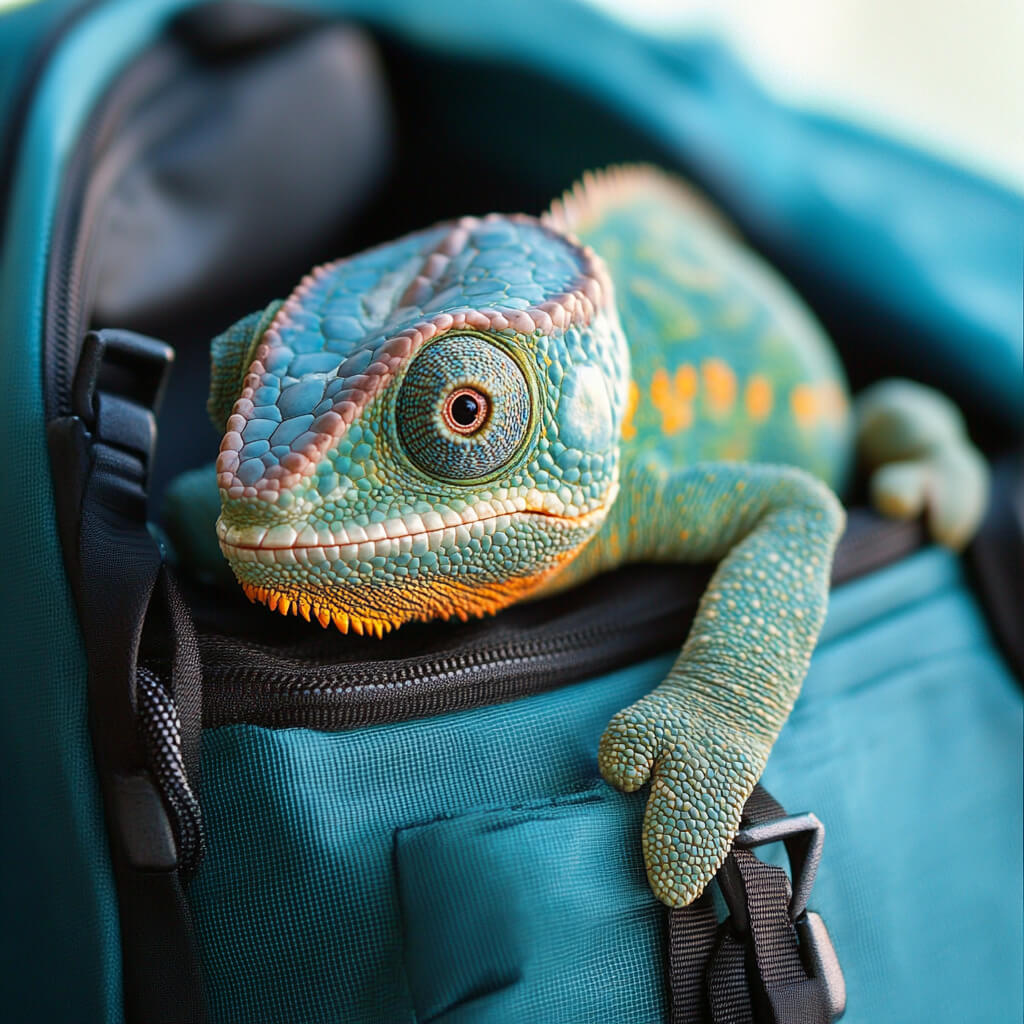Yes, chameleons can eat blueberries, but only as an occasional treat.
Chameleons are primarily insectivores, which means their natural diet consists mainly of insects.
While they can consume small amounts of fruit, including blueberries, it’s important to understand that fruits should not be a staple in their diet.
Understanding chameleon diet
To fully grasp whether blueberries are suitable for chameleons, we need to understand their natural diet and nutritional requirements.
| Chameleon Diet Components | Percentage in Diet |
| Insects | 90-95% |
| Fruits and Vegetables | 5-10% |
Chameleons are adapted to digest and extract nutrients primarily from insects.
Their digestive system is designed to process the exoskeletons of bugs and extract essential proteins, fats, and other nutrients.
While they can handle small amounts of plant matter, their bodies are not optimized for a fruit-heavy diet.
Key nutritional requirements for chameleons:
- Protein: Essential for growth and muscle maintenance
- Calcium: Crucial for bone health and egg production in females
- Vitamin D3: Necessary for calcium absorption
- Vitamin A: Important for eye health and immune function
- Hydration: Chameleons need access to clean water
Given these requirements, it’s clear that while blueberries can provide some nutrients, they cannot meet all of a chameleon’s dietary needs.
Blueberry nutrition: Benefits and risks for chameleons
Blueberries are known for their nutritional value in human diets, but how do they stack up for chameleons?
| Nutrient | Benefit for Chameleons | Potential Risk |
| Antioxidants | May support overall health | None known |
| Vitamins (C, K) | Can supplement vitamin intake | Excess may lead to imbalances |
| Natural Sugars | Provides quick energy | Can cause digestive issues if overfed |
| Fiber | May aid digestion in small amounts | Excess can cause blockages |
While blueberries offer some benefits, the risks of overfeeding should not be overlooked.
Chameleons have delicate digestive systems, and too much fruit can lead to diarrhea, bloating, or even more serious health issues.
Feeding blueberries to chameleons: Best practices
If you decide to offer blueberries to your chameleon, follow these guidelines:
- Frequency: Limit blueberry treats to once or twice a month.
- Preparation: Wash thoroughly and cut into small, manageable pieces.
- Portion size: Offer no more than 1-2 small pieces per feeding.
- Observation: Watch your chameleon for any signs of digestive discomfort after feeding.
Portion sizes for different chameleon species:
- Veiled chameleons: Up to 1/4 of a small blueberry
- Panther chameleons: Up to 1/2 of a small blueberry
- Jackson’s chameleons: A tiny piece, about 1/8 of a small blueberry
Remember, these are maximum amounts. It’s always better to err on the side of caution and offer smaller portions.
Alternative foods for chameleons
While blueberries can be an occasional treat, it’s important to focus on a diet that closely mimics what chameleons eat in the wild.
Here are some better alternatives:
| Food Type | Examples | Feeding Frequency |
| Insects | Crickets, roaches, mealworms | Daily |
| Leafy Greens | Collard greens, mustard greens | 2-3 times per week |
| Vegetables | Bell peppers, squash | 1-2 times per week |
| Commercial Foods | Repti-calcium, vitamin supplements | As directed by vet |
Health considerations when feeding blueberries
While blueberries are generally safe in small amounts, be aware of potential health issues:
- Digestive problems: Watch for diarrhea or changes in stool consistency.
- Allergic reactions: Though rare, look for swelling or changes in behavior.
- Nutritional imbalances: Overfeeding fruits can lead to improper nutrient ratios.
If you notice any concerning symptoms after feeding blueberries, consult a reptile veterinarian immediately.
FAQs
How often can chameleons eat blueberries?
Limit blueberry treats to once or twice a month.
Can baby chameleons eat blueberries?
It’s best to avoid feeding blueberries to baby chameleons, as they have more specific nutritional needs.
What other fruits can chameleons eat?
Small amounts of papaya, mango, or figs can be offered occasionally.
Are wild blueberries safe for chameleons?
Wild blueberries are safe, but ensure they’re free from pesticides and thoroughly washed.
Can chameleons eat dried blueberries?
Avoid dried blueberries as they’re too concentrated in sugars and may cause digestive issues.
How do I know if my chameleon likes blueberries?
If your chameleon readily eats the offered blueberry, it likely enjoys the taste. However, preference doesn’t equate to nutritional necessity.
Can blueberries be used for gut-loading insects?
While blueberries can be used for gut-loading, there are more nutritionally appropriate options like leafy greens and commercial gut-loading products.
Conclusion: Blueberries as an occasional treat
In conclusion, while chameleons can eat blueberries, they should only be offered as an infrequent treat.
The majority of a chameleon’s diet should consist of insects and leafy greens, with fruits making up only a small portion of their overall intake.
Remember these key points:
- Chameleons are primarily insectivores
- Blueberries can provide some nutrients but also carry risks if overfed
- Always prioritize a balanced diet that meets your chameleon’s specific nutritional needs
By understanding and respecting your chameleon’s natural dietary requirements, you can ensure they live a healthy, happy life.
If you’re ever in doubt about what to feed your chameleon, consult with a reptile nutrition expert or veterinarian.
Glossary
Gut-loading: The process of feeding nutritious foods to insects before offering them to chameleons. This enhances the nutritional value of the insects, ultimately benefiting the chameleon’s diet.
For more information on chameleon care and nutrition, check out our comprehensive chameleon care guide.







Leave a Reply